
Travelling up country
Images from a recent trip up to Flock Hill Station.

Images from a recent trip up to Flock Hill Station.
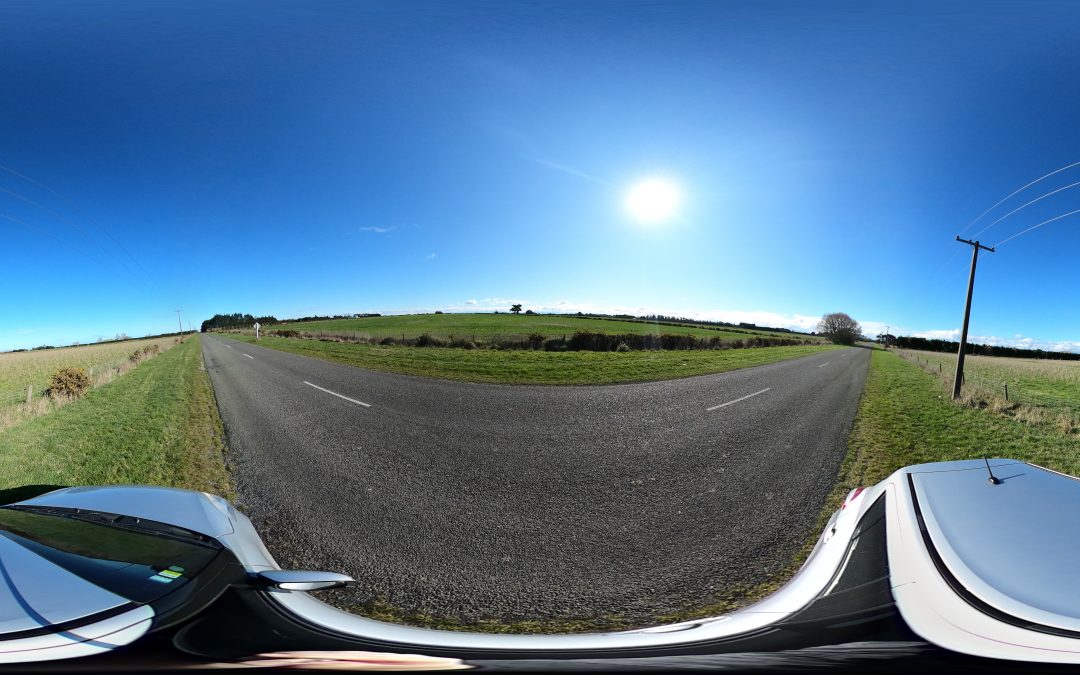
Recently we’ve been testing out our new GoPro MAX 360 and seeing what it can capture and thinking about what we might use it for. There are many ideas, here’s a few 360 images from a recent trip.
Lincoln area on the way into Christchurch
Lakeside
Coes Ford
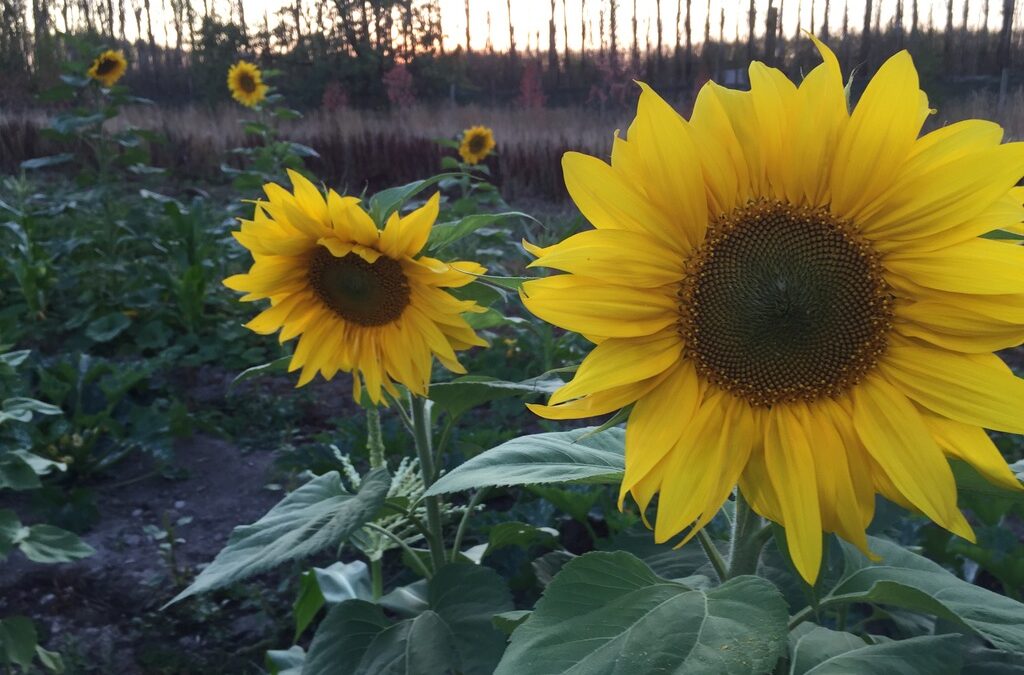
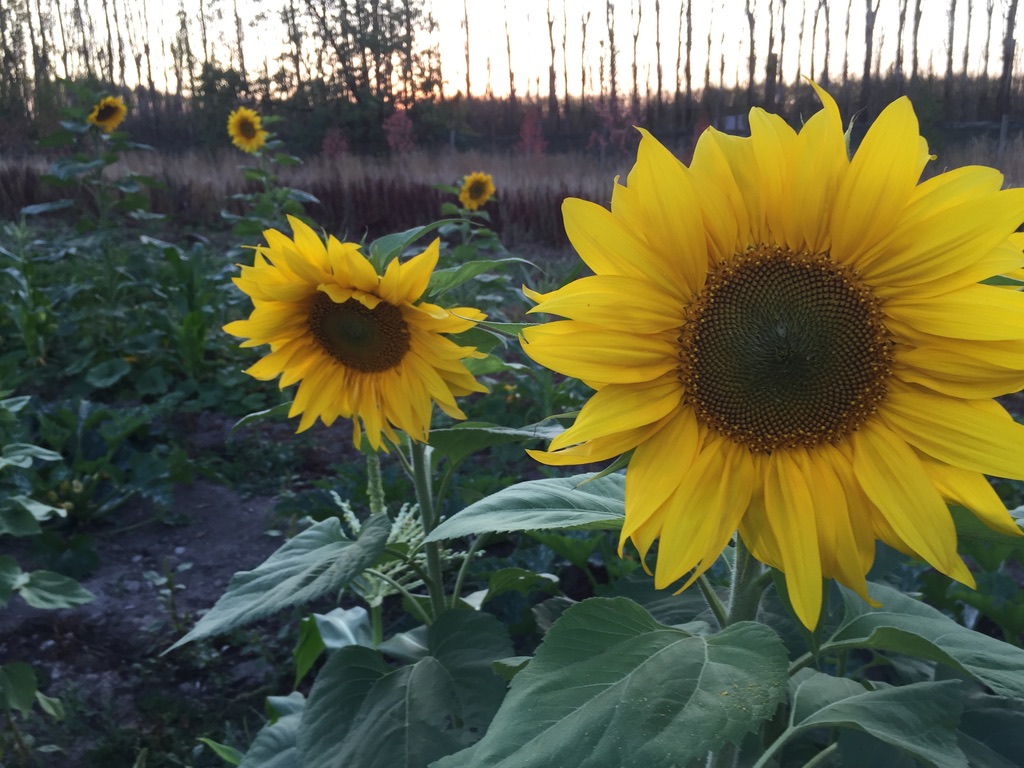
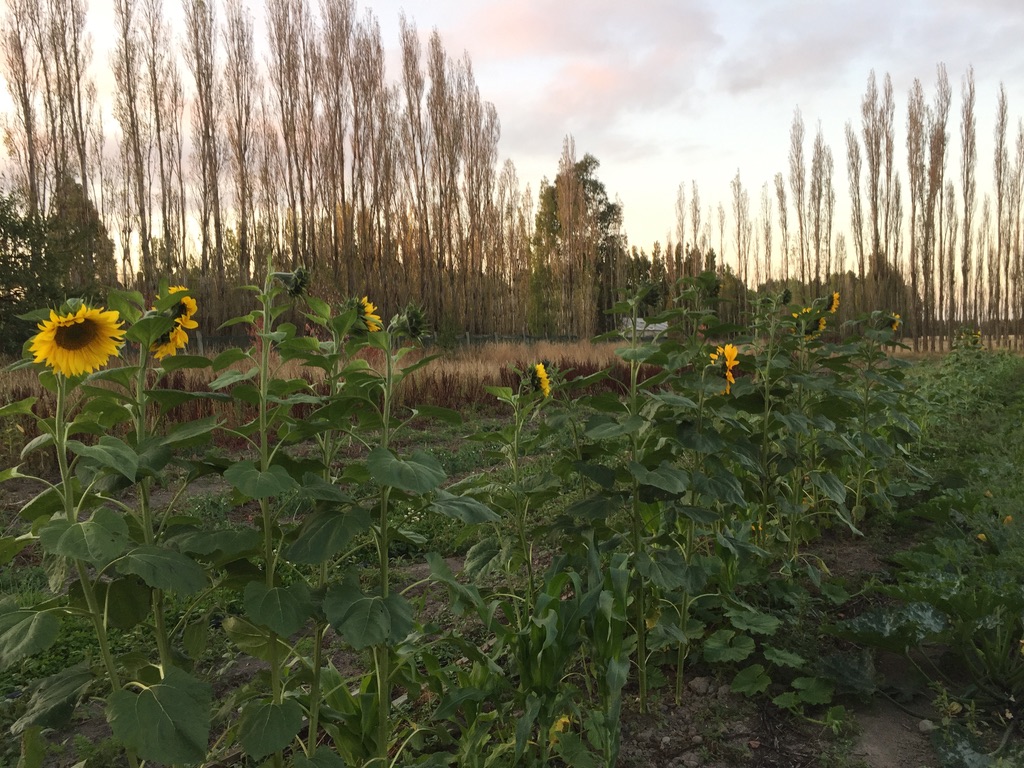
On our home plot and on other plots we have been investigating what little we can do to stimulate a better return without having to use unnatural fertiliser and other disruptive farming/soil modification techniques.
Our small step: At a plot that we had access to, in 2019 we planted in a mixture of sunflowers, beans, peas after the land had been used for a potato crop. We don’t sadly have full control of the land, otherwise, we would have planted more ground cover plants to reduce the amount of moisture loss (which is high in late summer), and to increase the soil richness allowed legumes mulch down, and if allowed would have run sheep through the area – and ultimately wouldn’t have allowed the entire area to be cultivated and turned over. Much of the farming practices seem quite disruptive to soil biology and unnecessary.
Research: A few years ago we attended a University of Canterbury ‘What if Wednesday’ night time lecture series and we started to gain a better understanding of what the global issues that we as a wider community faced. We also attended a number of Blinc Lincoln University events and have been interested to witness changes in the farming technical community.
Change: There seems to be a growing sense of urgency for the environment, and instead of a drive to continue to pump goodness into the land via sprays that kill weeds, that the weeds and other beneficial plants may, in fact, be assistive of regenerating the life of the soil and the microenvironments that all co-exist to make productive soils.
It appears to us that the farming style is changing and that we as humans may be drifting towards a far more sustainable approach to the use of land, and how to benefit the most from the land – by caring for it, rather than fighting against it.
Media is starting to pick up on how attractive a regenerative approach is, and it is great to see many starting to really take an interest in how this can work for their own farms and changing their current practices:
https://www.stuff.co.nz/business/farming/114537590/regenerative-farming-can-meat-save-the-planet
https://www.odt.co.nz/rural-life/horticulture/sunflowers-used-regenerate-soil
https://www.nzherald.co.nz/the-country/news/article.cfm?c_id=16&objectid=12349342
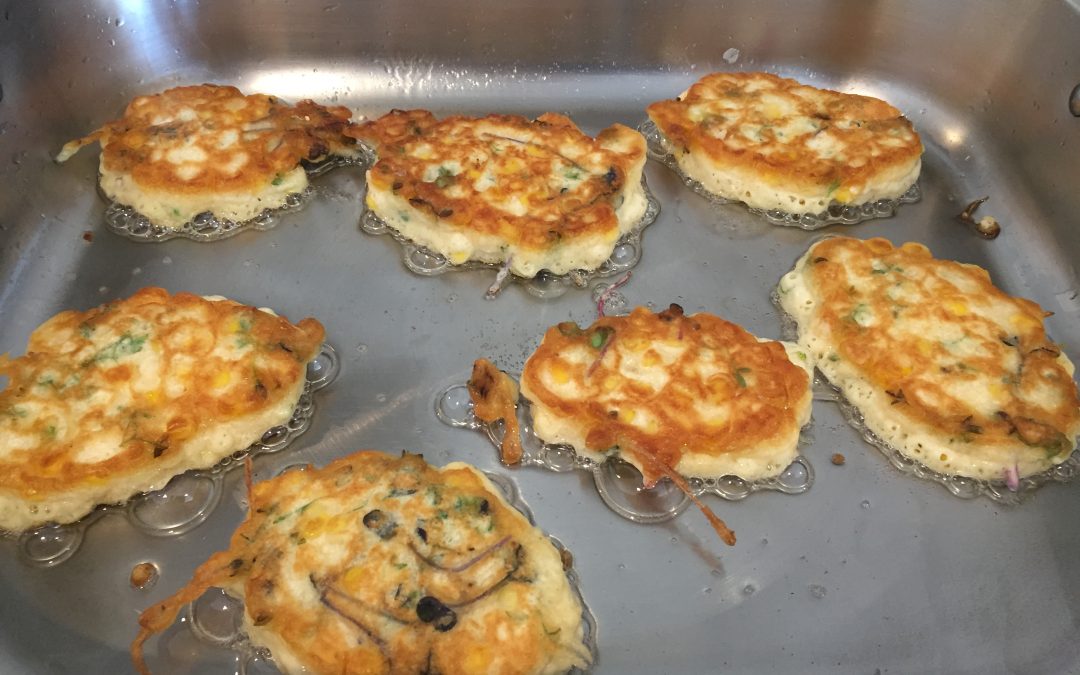
This simple recipe is a great addition to any lunchtime meals. Uses our standard 111 emergency recipe. That is 1 egg, 1 cup of liquid, 1 cup of flour, adapted for corn fritters.
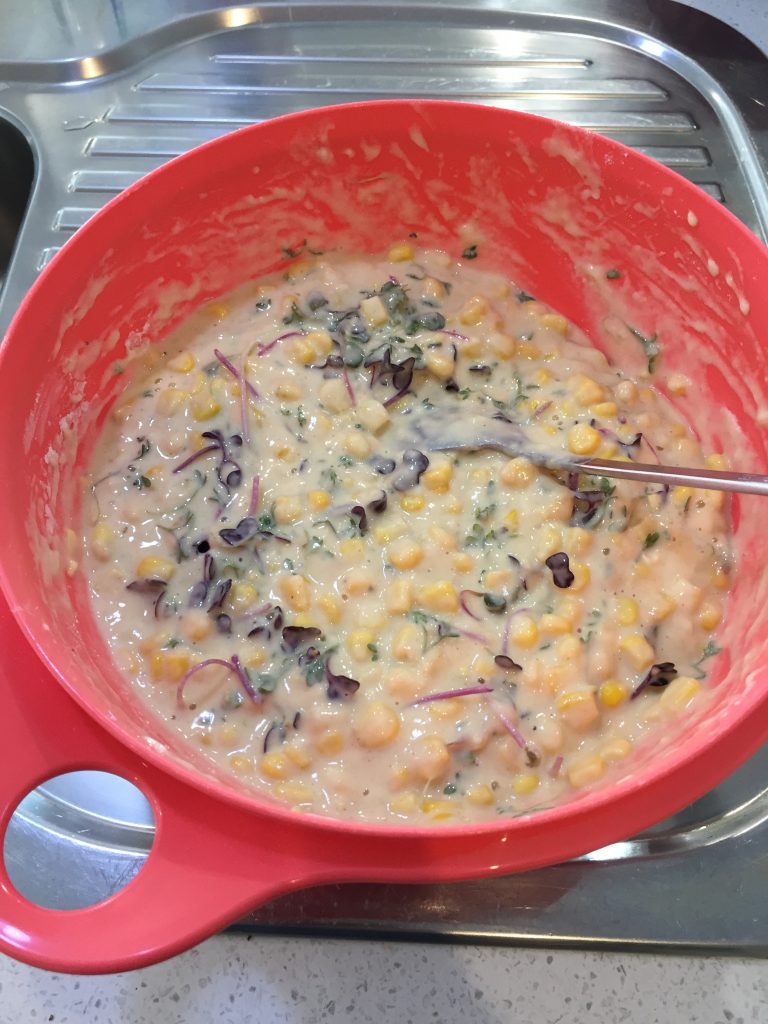
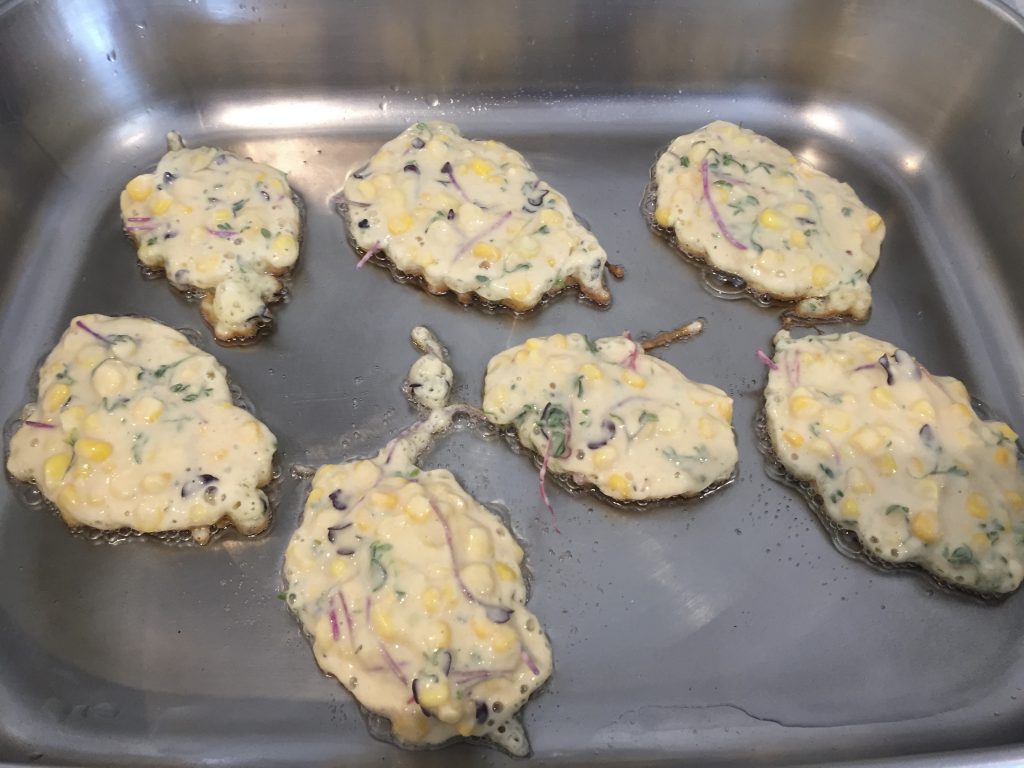
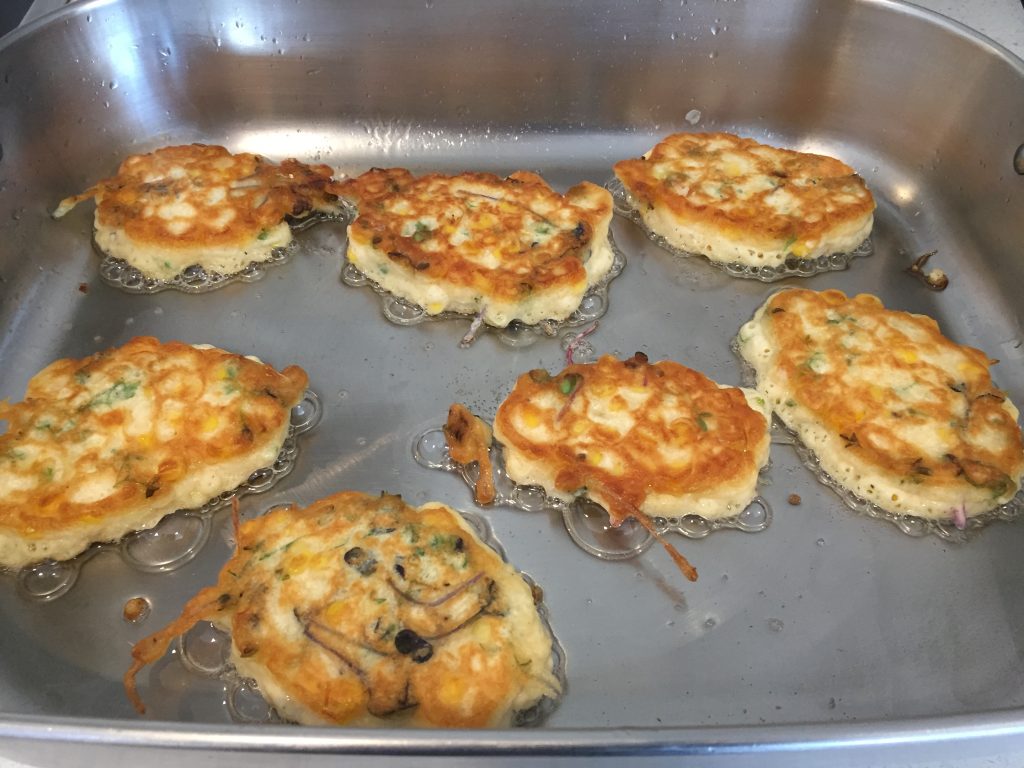
Feeds family of 4 with some left overs for afternoon snacks.
Stir together the flour, corn and eggs (add in a little milk or water to thin if needed) and fold in microgreens.
We use an electric frypan and add in 2 tablespoons (a squirt of) sunflower oil to coat the base of the pan – bring the pan up to a medium-high temperature before you add in the first fritters. They should sizzle when they are added to the pan. Into this, we place 6 spoon fulls of fritter mixture and cook until golden brown and flip – keep warm in the oven until they are all ready for the family to enjoy together!

We chopped and stewed comfrey leaves about three months ago, and the resulting rotted down slime mixed with water makes a delicious tea for winter plants. We pour some into a bucket, add water at 50/50 and then deliver it to the base of our fruiting trees and other crops. The tea liquid is absorbed by the soil quickly, and the thicker chunks break down over time, supplying a natural fertiliser over time.
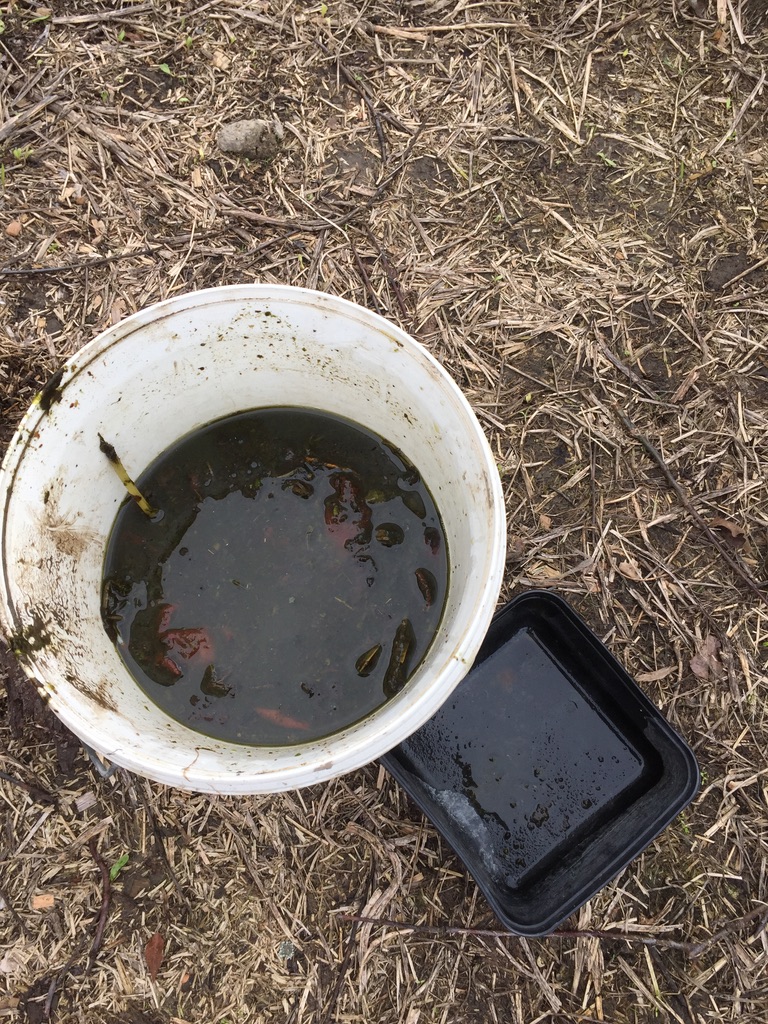
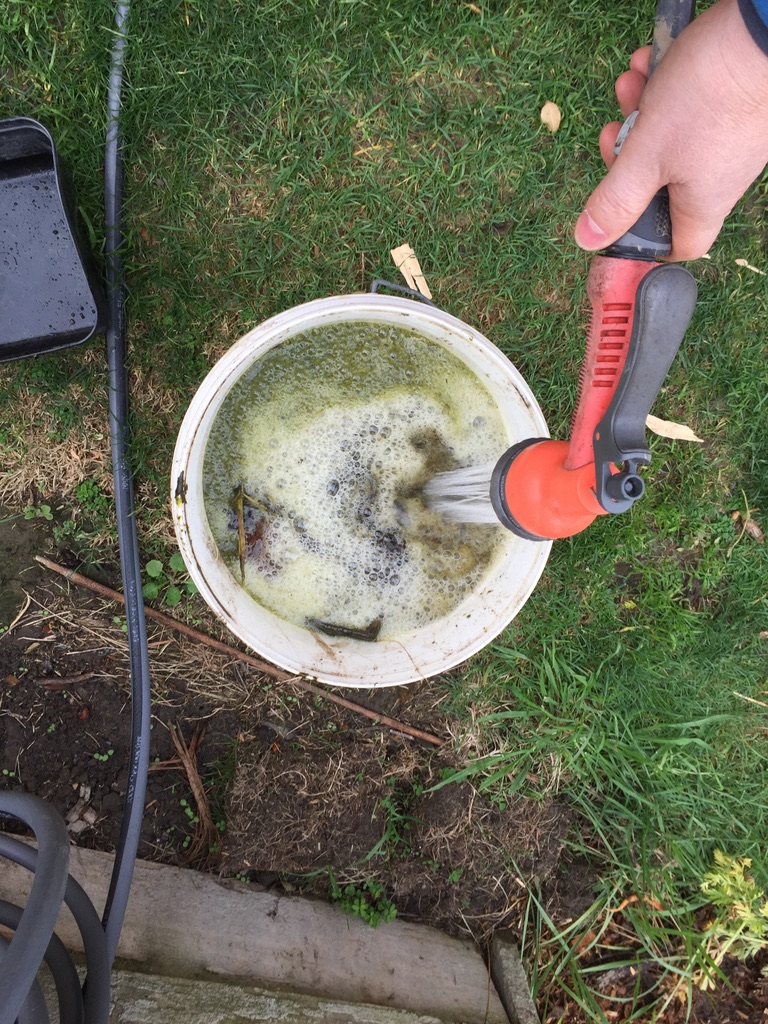
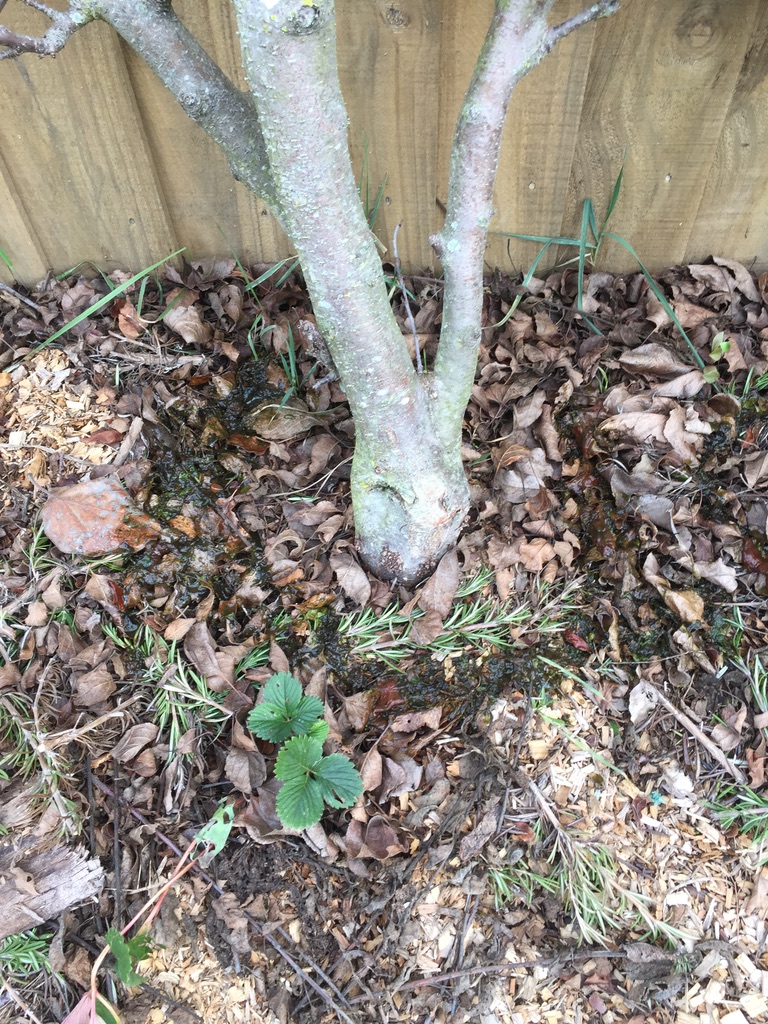
Also into our comfrey tea we added seaweed and this will help provide nutrients and minerals for the plants. We’ve found that citrus really like our seaweed teas.
Comfrey tea / seaweed tea not suitable for human consumption, so if you are making it and have inquisitive children, please do store it in a suitable location. We have tried to make our garden as child friendly and edible as possible, however there are some flowers and plants that aren’t edible.